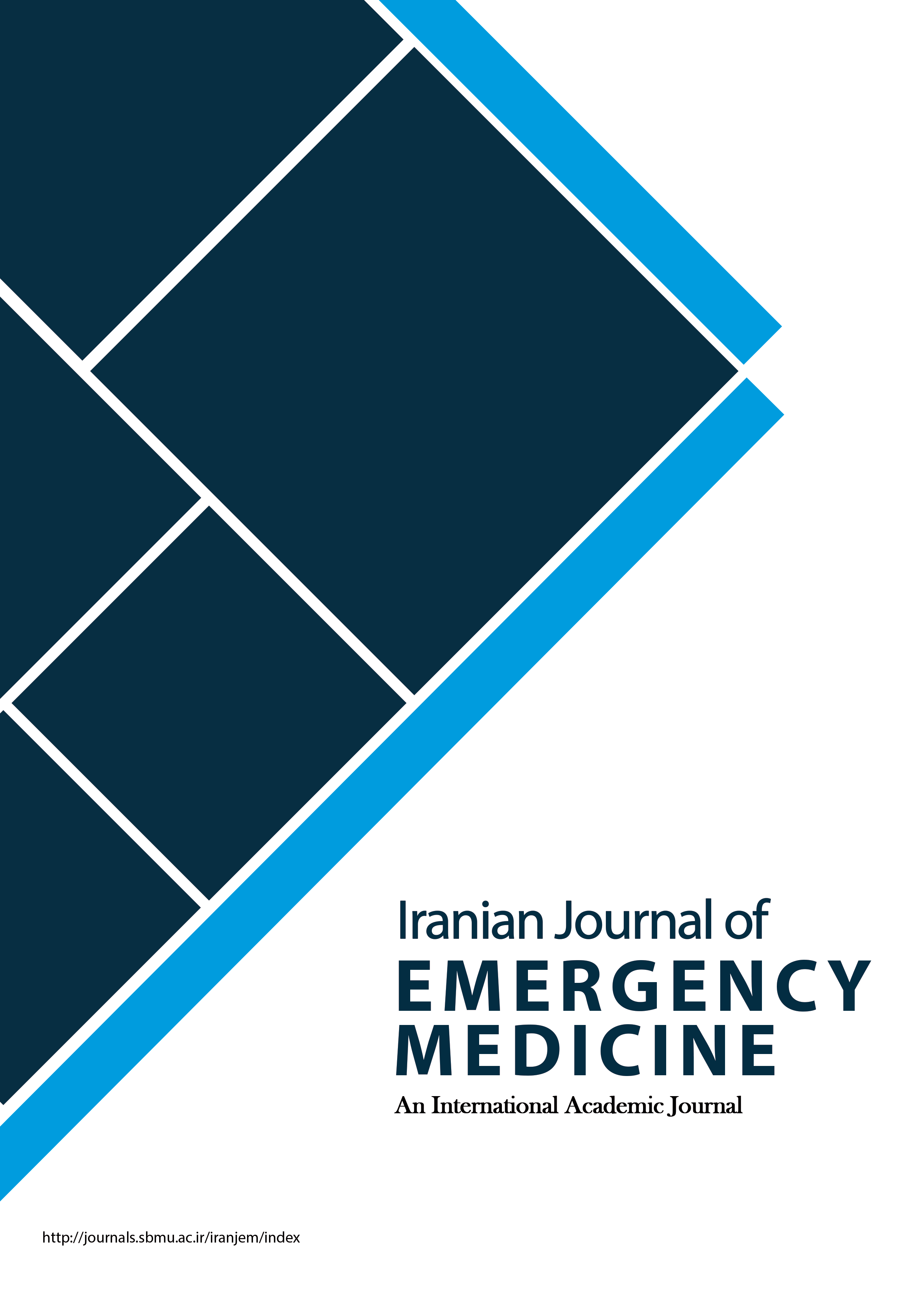Pediatric Trauma Patients in Imam Hossein Emergency Department; an Epidemiologic Study
Iranian Journal of Emergency Medicine,
Vol. 3 No. 1 (2016),
9 February 2016,
Page 8-4
https://doi.org/10.22037/ijem.v3i1.10971
Introduction: Trauma is one of the most important reasons that children visit emergency departments (ED) and is the most common cause of disability and mortality among them. Having epidemiological information on trauma in this age range, aids in accurate planning for prevention of these events. Therefore, the present study aimed to evaluate the epidemiology of trauma in pediatric trauma patients presented to ED. Methods: In a retrospective cross-sectional study using census method, the profiles of children presented to the trauma unit in ED of Imam Hossein Hospital, Tehran, Iran during 2011 and 2012 were evaluated. Data regarding age, sex, time and mechanism of trauma, anatomic site of trauma, measures taken, and outcome were gathered and descriptively analyzed using SPSS 16. Results: Data from the clinical profiles of 547 children were gathered using census method and evaluated (69.3% male). 169 (30.9%) cases had occurred in summer and 322 (58.9%) had visited between 4 PM and 12 AM. Car accidents with 286 (52.3%) cases were the most common mechanism, and head and neck area was the most common anatomic site of trauma. Finally, 537 (98.2%) children were discharged with a good general condition and 10 (1.8%) died. Most common traumas leading to death were chest and abdominal traumas (14.3%) and no significant relationship was detected between mortality and trauma mechanism (p = 0.845) or timing (p = 0.895). Conclusion: Based on the findings of the present study, most trauma cases under the age of 14 presented to ED of Imam Hossein Hospital, Tehran, Iran, were boys, in summer, between 4 PM and 12 AM, and car accident-related. 1.8% of traumas led to mortality, the most common causes being chest and abdominal traumas.



